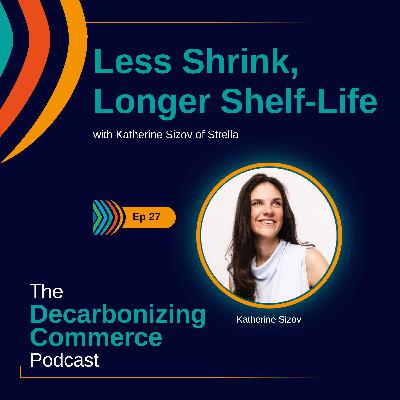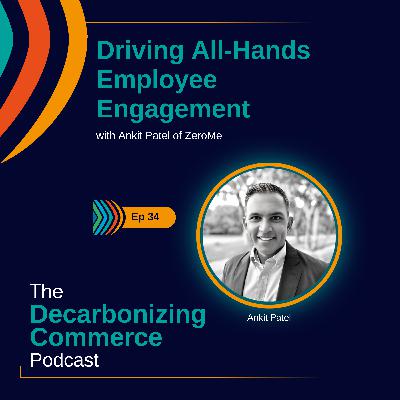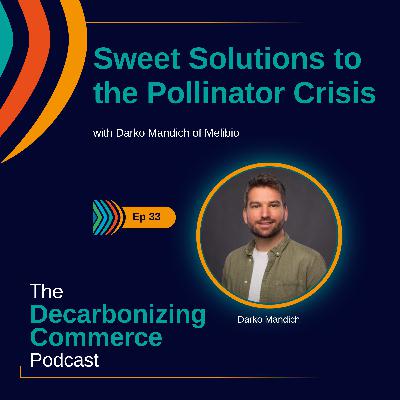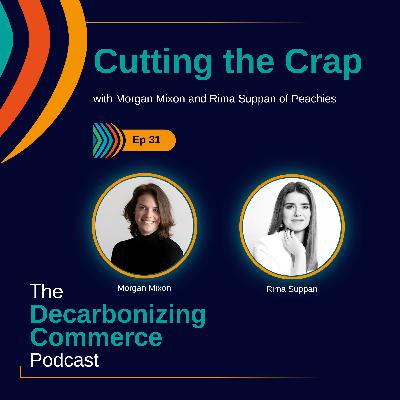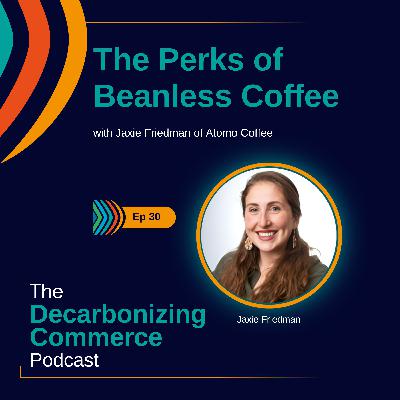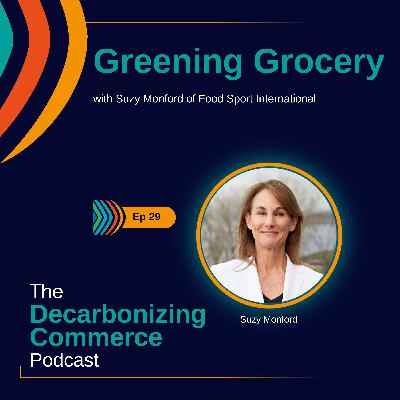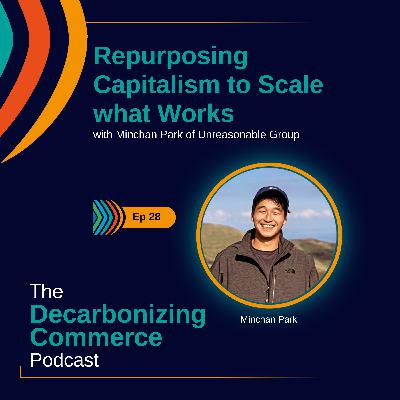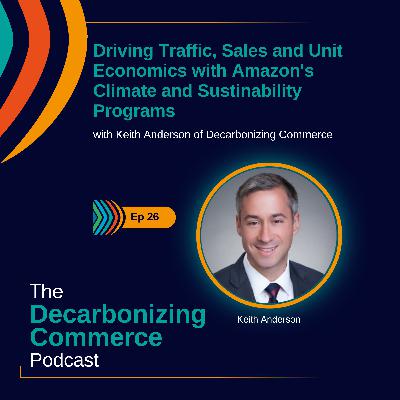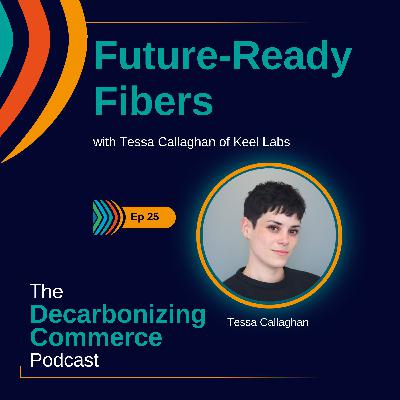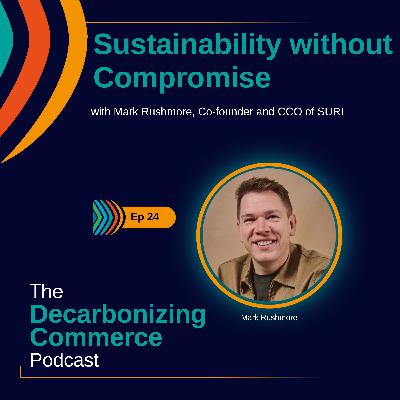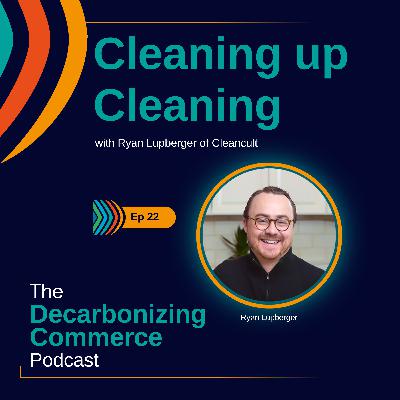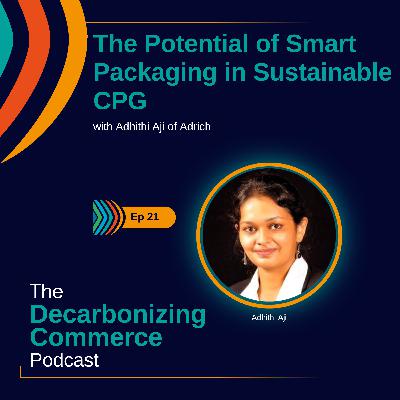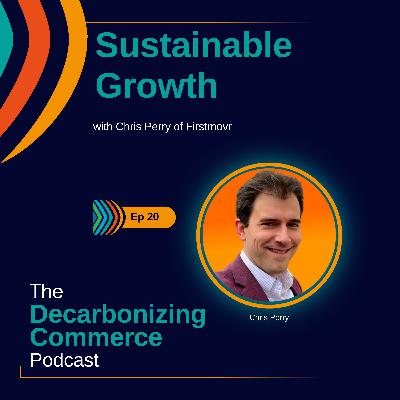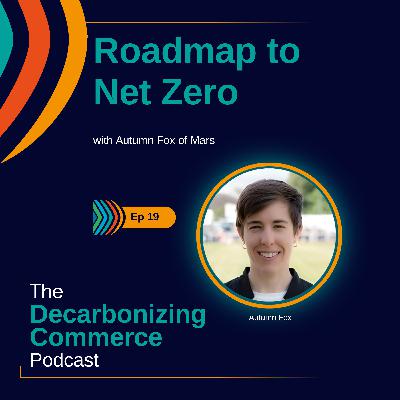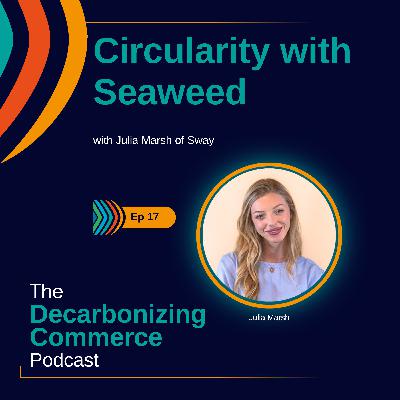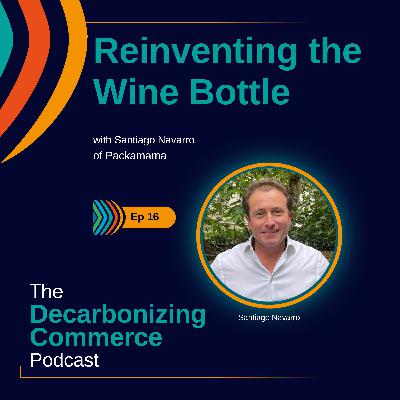Less Shrink, Longer Shelf-Life with Katherine Sizov of Strella
Update: 2024-05-09
Description
Today's guest is Katherine Sizov, co-founder and CEO of Strella, whose hardware-enabled software as a service uses data to predict the shelf life of produce and allows everybody from distribution centers, packers, wholesalers, and retailers to make better decisions about when to ship, when to sell, and where to allocate what produce.
Katherine joins Keith for a great discussion about how she and her co-founder came to start the business, some of the decisions they've made in terms of go-to-market and business model, the economic and environmental results that their customers are seeing, and how to get those yellow bananas straight from the farm to the shelves of supermarkets!
Learn more about Katherine Sizov:
To listen to the full episode join our Plus or Pro memberships at decarbonize.co:
Episode resources:
If you enjoyed this episode then please:
- Follow, rate, and review on Apple Podcasts
- Follow and rate on Spotify
- Learn more about Decarbonizing Commerce at decarbonize.co
TRANSCRIPT BELOW:
Keith Anderson: Welcome to Decarbonizing Commerce, where we explore what's new, interesting, and actionable at the intersection of climate innovation and commerce. I'm your host, Keith Anderson, and together we'll meet entrepreneurs and innovators reinventing retail, e commerce, and consumer products through the lenses of low carbon and commercial viability.
Welcome to the Decarbonizing Commerce Podcast. I'm your host, Keith Anderson. Food waste has been a big theme on the show so far, and for good reason. The global food system represents about a third of global emissions, and about half of those emissions are the result of food waste. And while households are the biggest driver of food waste, there's a lot that happens along the supply chain that the industry itself can address.
And today's guest is Katherine Sizov, co founder and CEO of a company called Strella, whose hardware enabled software as a service, uses data to predict the shelf life of produce and allows everybody from distribution centers, packers, wholesalers, and retailers to make better decisions about when to ship, when to sell, and where to allocate what produce.
We had a great discussion about how Katherine and her co founder came to start the business. Some of the decisions they've made in terms of, go to market and business model and the kinds of economic and environmental results that their customers are seeing. So I'm sure you'll find it as interesting as I did, and I'm happy to introduce Katherine Sizov of Strella.
Katherine, welcome to the Decarbonizing Commerce Podcast. Great to have you with us.
Katherine Sizov: Thanks so much for having me.
Keith Anderson: Well, why don't we start with a bit about your background and how you came to focus on food waste and start Strella.
Katherine Sizov: For sure, yeah, so my background is in neuroscience, so I was supposed to go to grad school and get a PhD, but something about sitting at a lab bench for another extended period of time wasn't really calling me, so I started reading whatever I thought was interesting out there, and I read the stat that 40 percent of food is wasted before it's consumed.
That pretty immediately struck me because, first of all, it's a gigantic number and second of all, I quickly came to the realization that I had no idea where my food came from. So I didn't even know where this waste occurred and how it happened. So set out on a very long journey. What became a very long journey of learning about food waste.
And then eventually that led to the formation of the company.
Keith Anderson: So maybe we can take a few minutes and for those that aren't as familiar, just Strella does and how do you do it?
Katherine Sizov: Yeah, so what we do at Strella is we can predict the shelf life of different types of produce, and we use that data as an input into making smarter decisions all across the supply chain. So as you can imagine, perishability is kind of a critical component, in food. However, that data has oftentimes been lacking or very siloed, and so what we do is we create that information.
We started in apples and pears, which can be stored for a whole year before they get to a grocery store. And what we do is we decide which apples need to get shipped to the grocery store first, based on how mature they are. We also work in bananas, where if you've gone to the grocery store, you've probably noticed the bananas are sometimes way too ripe, sometimes way too underripe.
So what we do is we make the color of bananas more consistent on the store shelf, which reduces waste, makes forecasting easier, and lifts sales.
Keith Anderson: So you mentioned the color. Can you describe the technology? Monitoring the, you know, banana peel and that's how you're identifying maturity or is there more to it than that?
Katherine Sizov: Yeah, so we monitor gases that produce, emits, which happens to be a proactive indicator . So for example one of the gases that we monitor is ethylene. So before color change or a starches to sugar change, basically fruit will be producing this and we can get a proactive indicator of a change. And this is great, because you get a window of opportunity to act on this information before the product actually changes in quality.
Keith Anderson: And it sounds like you're doing what you do with a combination of hardware and software. What is the hardware like? You know, is this something that is tiny and is sort of at the individual banana level? Does it cover a bunch? Does it cover a whole storage space? You know, help me visualize what the hardware side of the equation looks like.
Katherine Sizov: Yeah, so our current kind of hardware looks like a brick. And since we work in the supply chain, we work with pretty significant volumes. So we'll work with whole truckloads of bananas or roomfuls of apples, which could be anywhere from one to five million individual apples. So gigantic volumes. And yeah, we basically measure, things that are the level of resolution of the supply chain.
So for example, the smallest unit is a lot, which is fruit that was picked on the same day by the same grower, from the same region of an orchard. And we can follow that lot all the way down the chain as it passes from hand to hand.
Keith Anderson: And when you describe the chain, what are some of the major steps that you're thinking of?
Katherine Sizov: Yeah, so we typically follow whoever owns, produce as it travels. So, right now our major categories are suppliers or packers, so those are folks who consolidate from the grower. So, fruit, for example, is picked off a tree, it's consolidated at the packing house, it's put into boxes and stored and shipped.
So we work with packers and we also work with retailers and wholesalers and food service folks. So those are people that receive the product downstream and do the final mile distribution typically.
Keith Anderson: And I imagine many of our listeners are closer to the retail side of the value chain than the producer side. So to help them think about where this might fit in their business model, is this something that would be deployed, in the back room, is it on the sales floor? How does it come to life for them?
Katherine Sizov: Yeah, so we typically work at the distribution center level, because by the time an item gets to the store, there's really two decisions you can make. You can either mark it down or throw it away. Both options that are not great for retailers, and so what we're trying to do is capture data upstream so that we can make an informed decision to kind of prevent those two outcomes from happening in the first place. So for example, in apples, what we do with retailers is we always send the most ripe apple to the grocery store first from the distribution center. And what this helps is to reduce waste in the retailer's chain because they're always selling the most ripe apple first.
In bananas, kind of similar story, but just focused on creating a bit more consistency, at the store level, so ripening the bananas at the distribution center so that every time they get to the grocery store, they're that perfect yellow color.
Keith Anderson: And you've mentioned three categories of fruit that you're working with. Apples, pears, bananas. What's the sort of potential in terms of applications across perishables for the kind of technology that you've built and are d
Comments
In Channel

